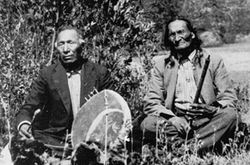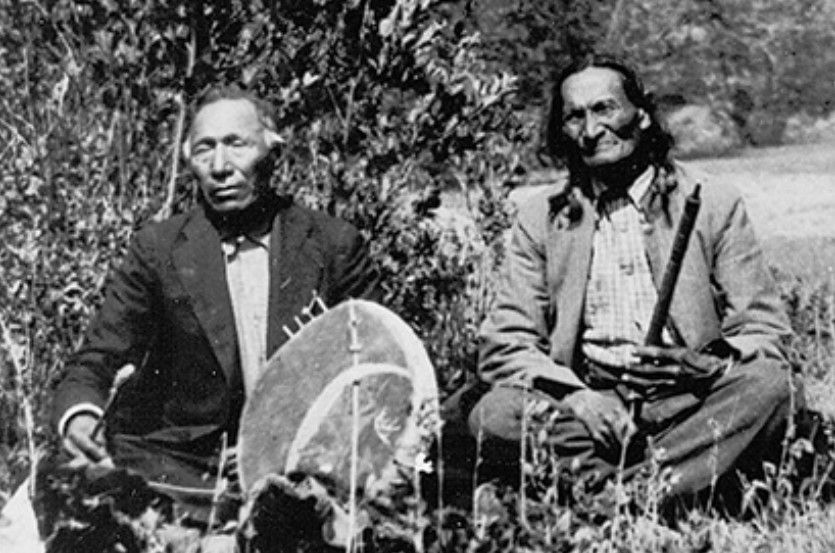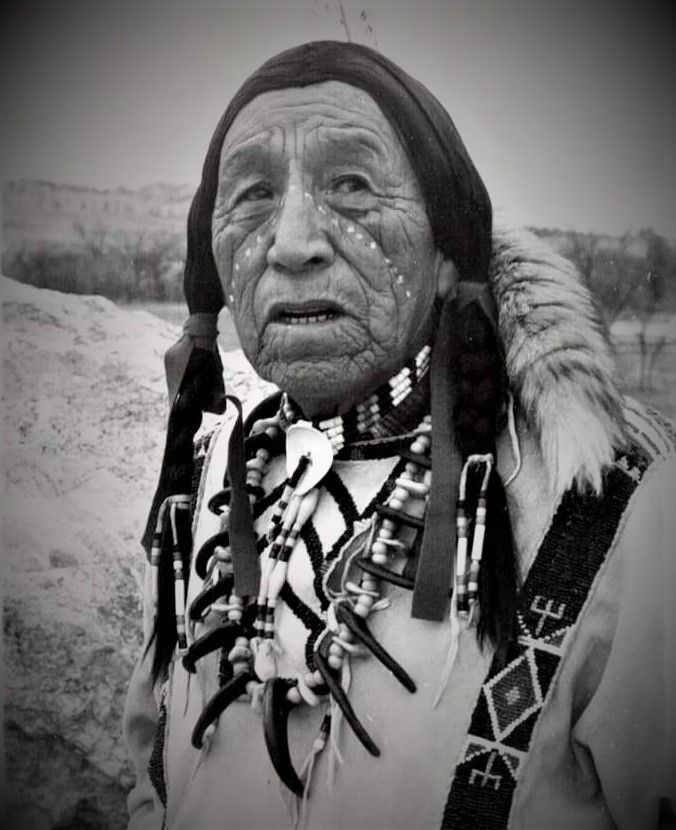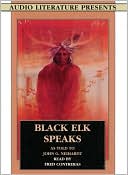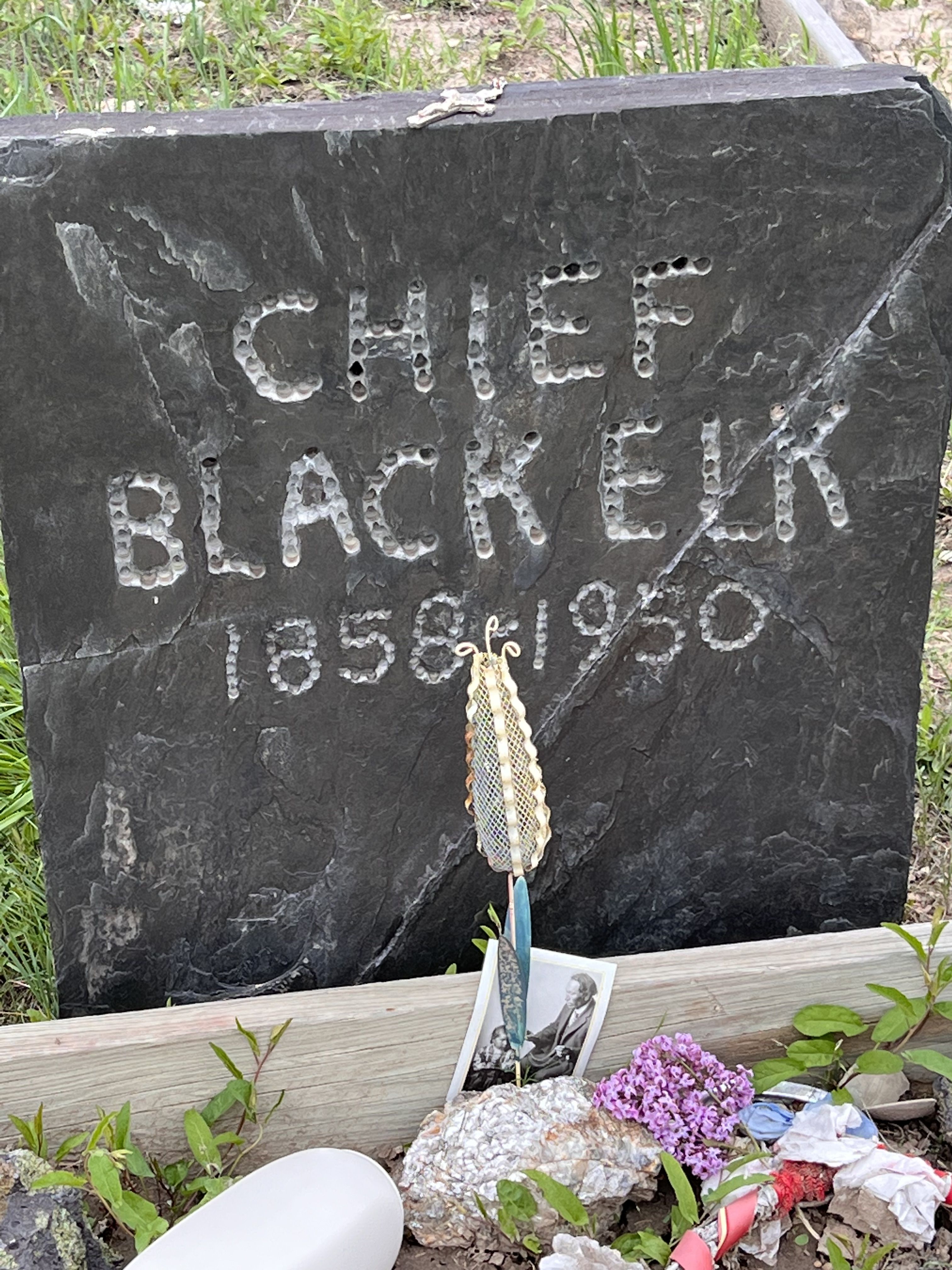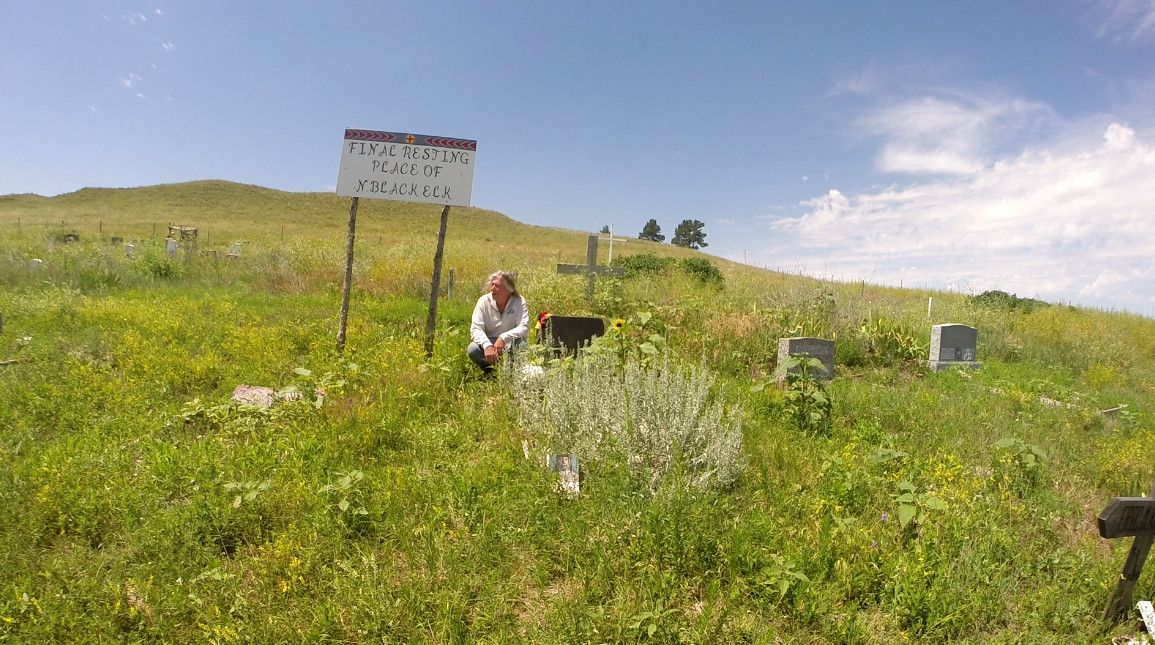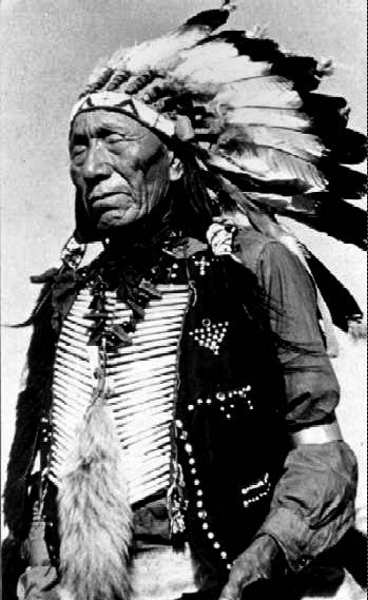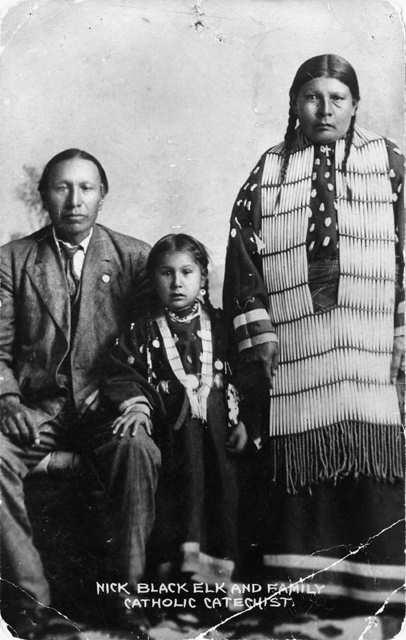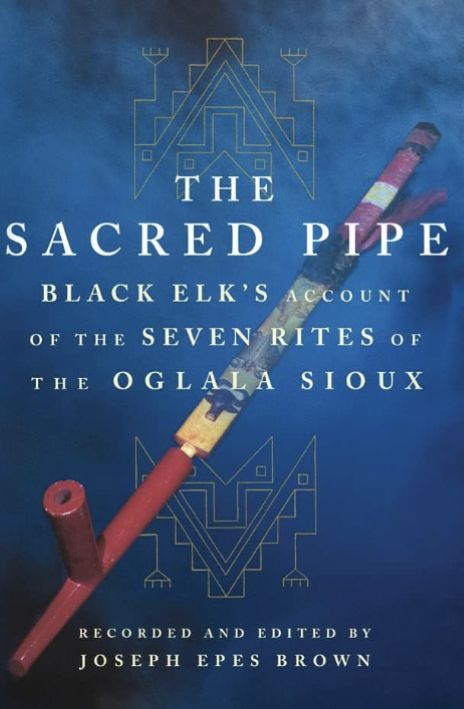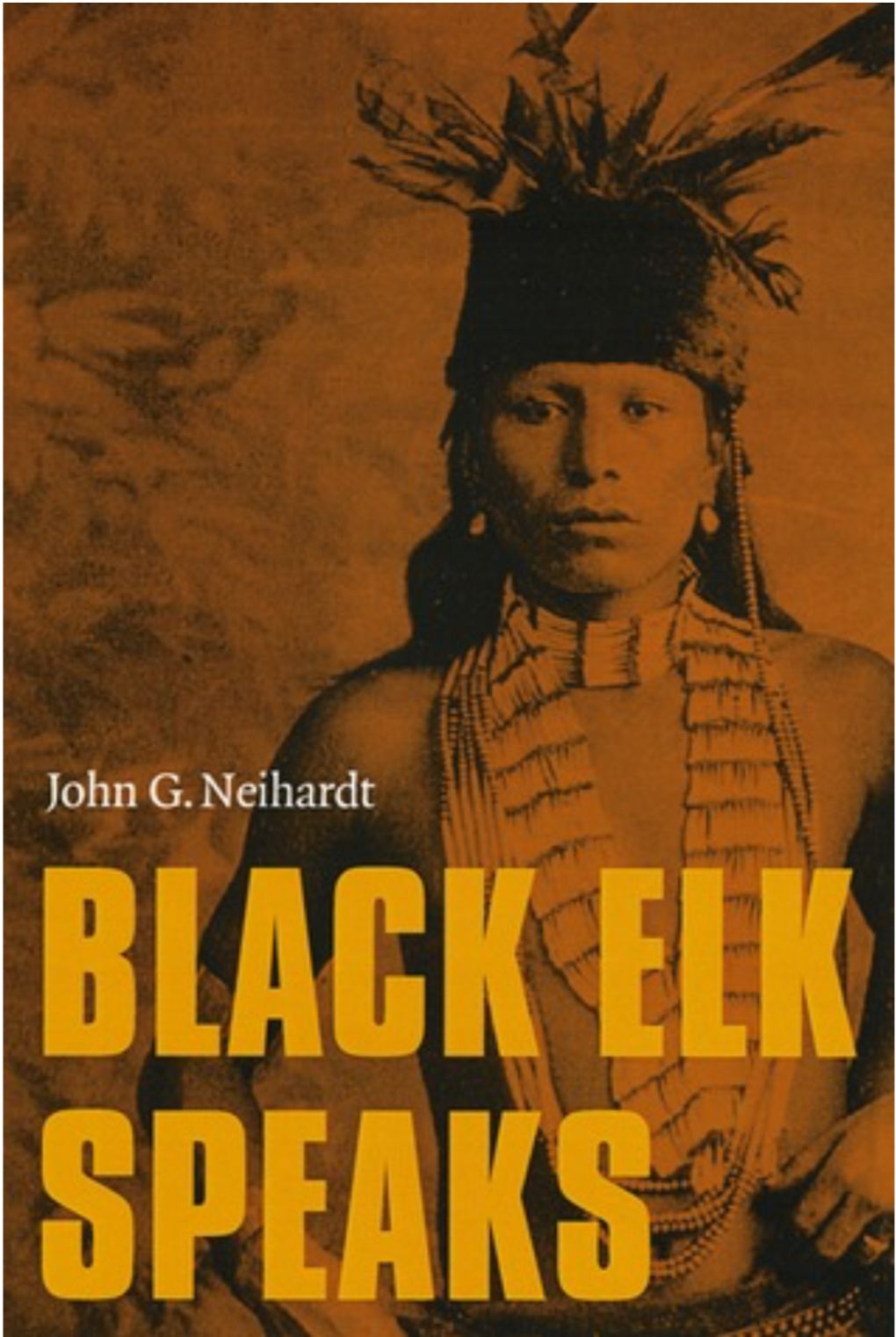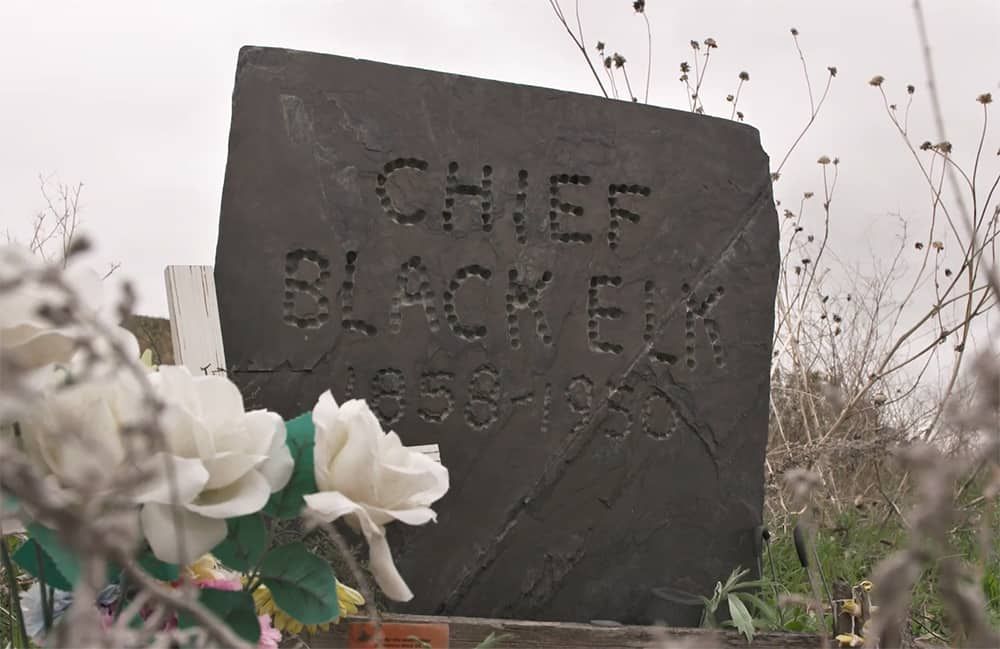(NOTE: ONCE THE BLACK ROAD WAS TAKEN THE NATIONS HOOP—ITS MEDICINE—WAS BROKEN). Then when the people were getting ready to begin the fourth ascent, the Voice spoke like some one weeping, and it said: "Look there upon your nation." And when I looked down, the people were all changed back to human, and they were thin, their faces sharp, for they were starving. Their ponies were only hide and bones. and the holy tree was gone. And as I looked and wept, I saw that there stood on the north side of the starving camp a sacred man who was painted red all over his body, and he held a spear as he walked into the center of the people, and there he lay down and rolled. And when he got up, it was a fat bison standing there, and where the bison stood a sacred herb sprang up right where the tree had been in the center of the nation's hoop. The herb grew and bore four blossoms on a single stem while I was looking--a blue, a white, a scarlet, and a yellow--and the bright rays of these flashed to the heavens. I know now what this meant, that the bison were the gift of a good spirit and were our strength, but we should lose them, and from the same good spirit we must find another strength. For the people all seemed better when the herb had grown and bloomed, and the horses raised their tails and neighed and pranced around, and I could see a light breeze going from the north among the people like a ghost; and suddenly the flowering tree was there again at the center of the nation's hoop where the four-rayed herb had blossomed. I was still the spotted eagle floating and I could see that I was already in the fourth ascent and the people were camping yonder at the top of the third long rise. It was dark and terrible about me, for all the winds of the world were fighting. It was like rapid gunfire and like whirling smoke, and like women and children wailing and like horses screaming all over the world. I could see my people yonder running about, setting the smokeflap poles and fastening down their tepees against the wind, for the storm cloud was coming on them very fast and black, and there were frightened swallows without number fleeing before the cloud. Then a song of power came to me..." Black Elk was involved in several battles with the U.S. cavalry. He participated, at about the age of twelve, in the Battle of the Little Big Horn of 1876, and was injured in the Wounded Knee Massacre in 1890. In 1887, Black Elk traveled to England with Buffalo Bill's Wild West Show, an unpleasant experience he described in chapter 20 of Black Elk Speaks. On May 11, 1887, the troop put on a command performance for Queen Victoria, whom they called "Grandmother England." He also described being in the crowd at her Golden Jubilee. Black Elk married his first wife, Katie War Bonnet, in 1892. She became a Catholic, and all three of their children were baptized as Catholic. After her death in 1903, he too was baptized, taking the name Nicholas Black Elk and serving as a catechist. The Catholic Church has named him a Servant if God, the first step in the path to sainthood. He continued to serve as a spiritual leader among his people, seeing no contradiction in embracing what he found valid in both his tribal traditions concerning Wakan Tanka and those of Christianity. He remarried in 1905 to Anna Brings White, a widow with two daughters. Together they had three more children and remained married until she died in 1941. Toward the end of his life, Black Elk revealed the story of his life, and a number of sacred Sioux rituals to John Neihardt and Joseph Epes Brown for publication, and his accounts have won wide interest and acclaim.
(NOTE: ONCE THE BLACK ROAD WAS TAKEN THE NATIONS HOOP—ITS MEDICINE—WAS BROKEN). Then when the people were getting ready to begin the fourth ascent, the Voice spoke like some one weeping, and it said: "Look there upon your nation." And when I looked down, the people were all changed back to human, and they were thin, their faces sharp, for they were starving. Their ponies were only hide and bones. and the holy tree was gone. And as I looked and wept, I saw that there stood on the north side of the starving camp a sacred man who was painted red all over his body, and he held a spear as he walked into the center of the people, and there he lay down and rolled. And when he got up, it was a fat bison standing there, and where the bison stood a sacred herb sprang up right where the tree had been in the center of the nation's hoop. The herb grew and bore four blossoms on a single stem while I was looking--a blue, a white, a scarlet, and a yellow--and the bright rays of these flashed to the heavens. I know now what this meant, that the bison were the gift of a good spirit and were our strength, but we should lose them, and from the same good spirit we must find another strength. For the people all seemed better when the herb had grown and bloomed, and the horses raised their tails and neighed and pranced around, and I could see a light breeze going from the north among the people like a ghost; and suddenly the flowering tree was there again at the center of the nation's hoop where the four-rayed herb had blossomed. I was still the spotted eagle floating and I could see that I was already in the fourth ascent and the people were camping yonder at the top of the third long rise. It was dark and terrible about me, for all the winds of the world were fighting. It was like rapid gunfire and like whirling smoke, and like women and children wailing and like horses screaming all over the world. I could see my people yonder running about, setting the smokeflap poles and fastening down their tepees against the wind, for the storm cloud was coming on them very fast and black, and there were frightened swallows without number fleeing before the cloud. Then a song of power came to me..." Black Elk was involved in several battles with the U.S. cavalry. He participated, at about the age of twelve, in the Battle of the Little Big Horn of 1876, and was injured in the Wounded Knee Massacre in 1890. In 1887, Black Elk traveled to England with Buffalo Bill's Wild West Show, an unpleasant experience he described in chapter 20 of Black Elk Speaks. On May 11, 1887, the troop put on a command performance for Queen Victoria, whom they called "Grandmother England." He also described being in the crowd at her Golden Jubilee. Black Elk married his first wife, Katie War Bonnet, in 1892. She became a Catholic, and all three of their children were baptized as Catholic. After her death in 1903, he too was baptized, taking the name Nicholas Black Elk and serving as a catechist. The Catholic Church has named him a Servant if God, the first step in the path to sainthood. He continued to serve as a spiritual leader among his people, seeing no contradiction in embracing what he found valid in both his tribal traditions concerning Wakan Tanka and those of Christianity. He remarried in 1905 to Anna Brings White, a widow with two daughters. Together they had three more children and remained married until she died in 1941. Toward the end of his life, Black Elk revealed the story of his life, and a number of sacred Sioux rituals to John Neihardt and Joseph Epes Brown for publication, and his accounts have won wide interest and acclaim.
